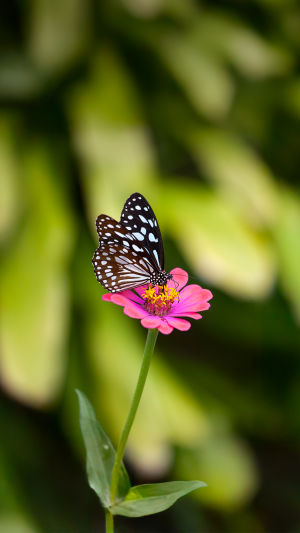It's easy to overlook them, but insects are everywhere, quietly shaping the environment.
From buzzing bees to crawling beetles, every insect goes through a life cycle that affects plants, soil, and even other animals.
Understanding these stages helps us see why insects are more than pests—they're essential players in ecosystems. Their presence is subtle but powerful, influencing everything from plant growth to nutrient cycling, which affects the entire balance of nature.
<h3>The stages of an insect life</h3>
Most insects undergo four main stages: egg, larva, pupa, and mature stage. Take butterflies, for example. They start as tiny eggs, hatch into caterpillars that eat and grow rapidly, then form a chrysalis during the pupa stage, and finally emerge in their mature form with wings. Each stage serves a purpose. The larval stage focuses on growth and energy storage, while the mature stage is geared toward reproduction and spreading the species.
Other insects, like grasshoppers, have simpler cycles with three stages: egg, nymph, and fully grown form. Nymphs look like smaller versions of the mature insect and gradually develop wings and reproductive organs. This gradual change allows them to start interacting with their environment earlier, feeding, and avoiding predators as they grow.
<h3>Insects as ecosystem engineers</h3>
Insects aren't just moving through life stages—they actively shape the world around them. Bees pollinate flowers, ensuring plants reproduce and fruit develops. Termites break down dead wood, enriching soil with nutrients. Even tiny ants aerate soil, helping water and nutrients reach plant roots. Each stage of an insect's life contributes in a different way.
For example, caterpillars may devour leaves, but mature butterflies spread pollen, balancing their impact. Without these roles, ecosystems would lose stability, and many other species would struggle to survive.
<h3>Food web connections</h3>
Insects are a critical link in the food chain. Birds, frogs, bats, and even larger insects rely on them for food. A surge in caterpillars can provide birds with protein-rich meals, while aquatic insects serve as prey for fish. Missing even one type of insect can ripple through the ecosystem, affecting many species that depend on them.
Their presence—or absence—can influence plant health, soil quality, and the overall stability of natural habitats. Insects also help recycle organic matter, turning waste into nutrients that benefit plants, creating a continuous cycle of life.
<h3>Adaptations across life stages</h3>
Each stage of an insect's life comes with unique adaptations. Larvae often have specialized mouthparts for feeding efficiently, while mature insects may develop wings for dispersal. Some insects, like mosquitoes, spend early stages in water and emerge in their flying form, exploiting different habitats to reduce competition. These adaptations make insects versatile and highly resilient in the face of environmental changes.
<h3>Human takeaways</h3>
Observing insect life cycles teaches us patience, adaptability, and resourcefulness. Even small creatures demonstrate how life is interconnected and how every stage matters. Gardeners, farmers, and conservationists use this knowledge to support beneficial insects while managing pests naturally.
Simple actions like planting native flowers, reducing pesticide use, or providing water sources can help insects complete their life cycles, benefiting the entire ecosystem and even improving crop yields for humans. Watching insects thrive encourages curiosity and inspires us to consider the unseen effects of our own actions on the environment.
<h3>Reflecting on the hidden world</h3>
The next time a butterfly flits by or an ant crosses your path, take a moment to consider the intricate journey it has taken to get there. Each life stage, from tiny egg to fully grown form, carries a purpose and contributes to a larger system.
Insects remind us that even the smallest lives can have a massive impact, shaping the world in ways we often overlook—but can't survive without. They show us the beauty of persistence, transformation, and balance in nature, proving that size doesn't determine significance.





